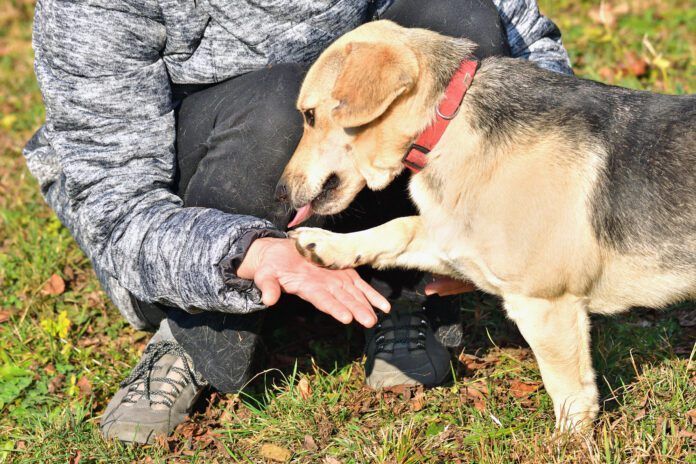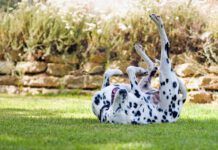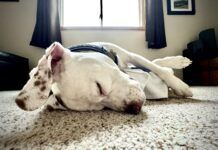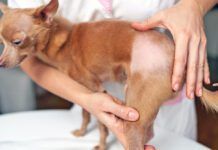Knuckling in dogs is a condition where a dog walks or stands on the top of their paws instead of placing them on the ground properly, on their pads. It might appear your dog is having trouble standing and walking all of a sudden, but you need to look more closely and watch how they put their paw down.
Knuckling results in the paw folding under, causing the dog to drag the top of their foot along the ground. Knuckling is not a disease itself but rather a clinical sign of an underlying medical issue. It should never be ignored. It can impact any dog at any age, though it is more commonly seen in puppies during developmental stages or in older dogs with neurological or musculoskeletal conditions. If your old dog’s back legs appear to be collapsing, watch how they put their paws down when trying to move.
While a dog limping on a front leg may make you think of knuckling, it’s dependent on whether the dog is trying to walk with the top of the foot down or not. Lameness can occur with and without knuckling.
Signs of knuckling in dogs include:
- Walking or standing on top of their paws
- Sores on the top of their paws
- Uneven gait
- Unsteady gait
- If you lift the foot, dog places paw back with the top down
Causes of Knuckling in Dogs
There are several potential causes of knuckling, and they vary widely in medical severity:
Neurological dysfunction, diseases impacting the spinal cord, nerves, or brain:
Trauma that impairs communication between the brain and limbs:
Muscular or orthopedic issues:
- Injuries
- Age-related deterioration
- Congenital deformities
Nutritional imbalances in puppies:
- Rapid growth in large-breed dogs, especially when dietary calcium and phosphorous levels are not fed at proper levels
- Slippery, uneven footing
Treating Knuckling in Dogs
The treatment for knuckling depends on identifying and addressing the root cause:
- For neurological conditions, treatment may involve anti-inflammatory medications, physical rehabilitation, and, in some cases, surgery.
- For orthopedic or muscular problems, supportive wraps, splits, orthopedic braces, and physical therapy can help realign the law and encourage proper limb posture while the underlying injury heals.
In puppies with developmental knuckling, improving their footing by avoiding slippery surfaces, limiting high-impact activity, and providing structured movement can help. In some mild cases, the condition may resolve on its own as the puppy matures, particularly when supportive management is in place.
Nutritional Management of Knuckling in Dogs
Nutrition can play a significant role in the prevention and management of knuckling, especially in growing puppies. Nutrition plays an essential role, particularly during growth stages and recovery. Choosing the right diet can help prevent developmental knuckling and support overall.
Diets that are improperly balanced in calcium, phosphorus, or vitamin D can contribute to significant musculoskeletal abnormalities, particularly in large and giant breed dogs. Excessive calcium intake, for example, impacts bone development and can cause bones to grow too quickly or improperly, leading to growth disorders that may present as knuckling.
Ensuring that puppies are fed a complete and balanced diet that is specifically formulated for their size and developmental stage is critical for proper growth and development. For adult dogs, maintaining a healthy weight through proper nutrition helps reduce strain on joints, which can indirectly help prevent issues like knuckling from developing due to joint degeneration.
Knuckling in dogs is a sign of an underlying issue that requires veterinary attention. Early detection and intervention are key, and treatment plans should be tailored to the individual dog based on the root cause of the problem. If your dog begins knuckling, it is crucial to consult a veterinarian promptly to determine the cause and appropriate course of action for your pet.






